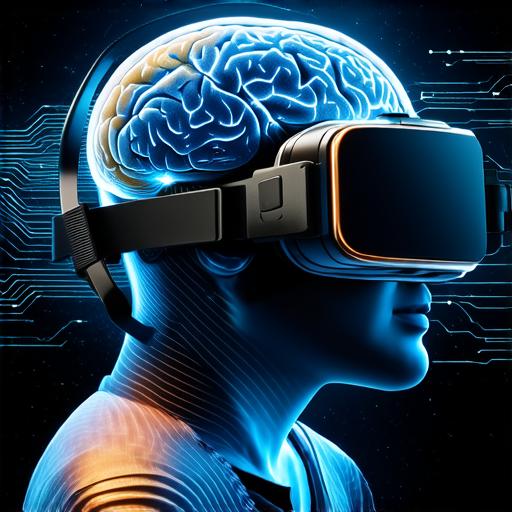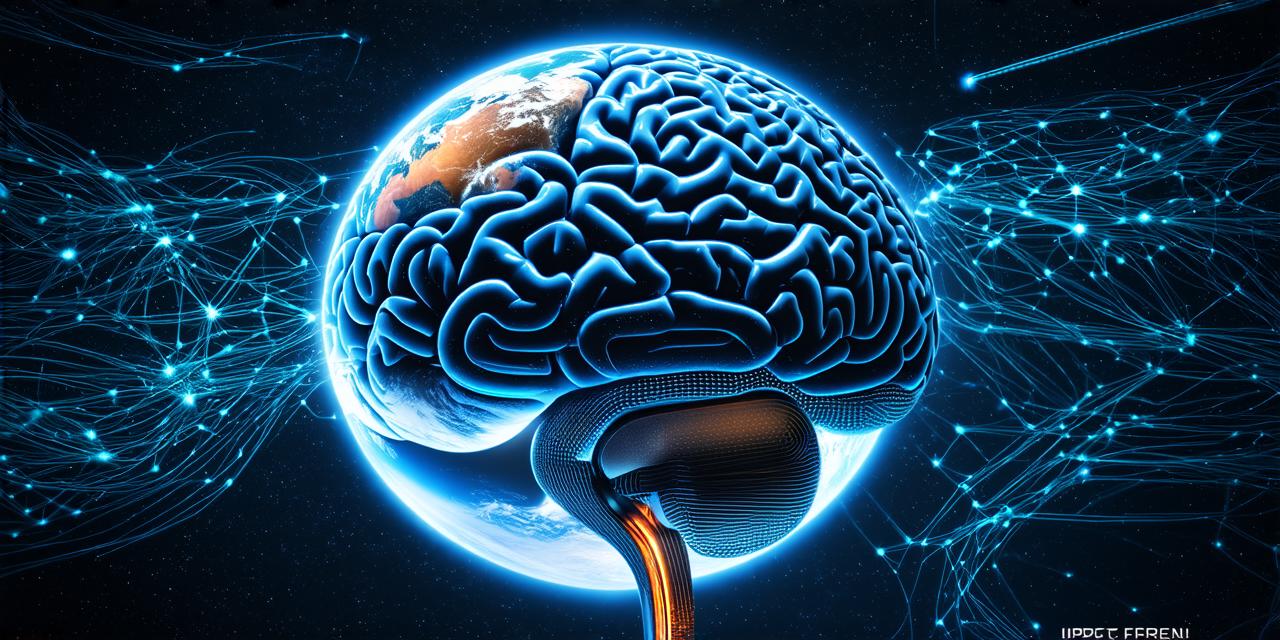<!DOCTYPE html>
The Impact of Virtual Reality on Brain Development
Virtual reality provides a unique opportunity to study the effects of immersive environments on brain development. Research has shown that VR experiences can alter neural activity in various regions of the brain, including the prefrontal cortex, hippocampus, and amygdala. These changes can have both positive and negative effects on cognitive abilities, depending on the type of experience and the individual’s age and background.
For example, a study conducted by the University of California, Irvine found that playing a VR game for just 30 minutes increased participants’ spatial awareness and memory. Similarly, a study published in the Journal of Neuroscience found that exposure to a virtual environment could improve social cognition in people with autism spectrum disorder.
On the other hand, excessive use of VR can have negative effects on brain development. For instance, prolonged exposure to virtual environments can lead to motion sickness and disorientation, which can affect cognitive function and cause headaches. Additionally, some studies have suggested that VR experiences can disrupt sleep patterns and affect sleep quality, which can have long-term consequences for brain health.
Case Studies: Enhancing Cognitive Abilities with Virtual Reality
One of the most promising applications of VR technology is in enhancing cognitive abilities. For example, VR simulations can be used to train pilots, surgeons, and other professionals in a safe and controlled environment. This type of immersive learning can improve decision-making skills, hand-eye coordination, and spatial awareness, which are crucial for success in these fields.
Another area where VR technology has shown promise is in the treatment of mental health conditions such as anxiety and depression. For instance, a study conducted by Stanford University found that exposure to a virtual environment could reduce symptoms of anxiety and phobias in people with these conditions. Similarly, a study published in the Journal of Clinical Psychology found that VR therapy was as effective as traditional cognitive-behavioral therapy in treating depression.
Personal Experiences: Using Virtual Reality for Mental Health Treatment
As a VR developer, I have had the opportunity to work on several projects that utilized virtual reality technology for mental health treatment. One project involved creating a virtual environment that simulated a fear of heights. Participants wore VR headsets and were immersed in a virtual world where they had to cross a bridge that was hundreds of feet above the ground. The goal was to help participants overcome their fear of heights by exposing them to the fear-inducing environment in a controlled and safe way.

Another project involved creating a virtual reality experience for people with post-traumatic stress disorder (PTSD). Participants were immersed in a virtual world that replicated the traumatic event they had experienced, such as a car accident or combat. The goal was to help participants process their emotions and overcome their trauma through exposure therapy.
FAQs: Frequently Asked Questions About Virtual Reality and Brain Development
1. What is virtual reality?
Virtual reality is a technology that creates an immersive, simulated environment that can be experienced through specialized headsets or displays.
2. How does virtual reality impact brain development?
Virtual reality experiences can alter neural activity in various regions of the brain, including the prefrontal cortex, hippocampus, and amygdala. These changes can have both positive and negative effects on cognitive abilities, depending on the type of experience and the individual’s age and background.
3. What are some examples of how virtual reality can be used to enhance cognitive abilities?
Virtual reality simulations can be used to train pilots, surgeons, and other professionals in a safe and controlled environment. This immersive learning can improve decision-making skills, hand-eye coordination, and spatial awareness, which are crucial for success in these fields.
4. How can virtual reality be used to treat mental health conditions?
Virtual reality technology has shown promise in treating anxiety and depression, as well as other mental health conditions. Exposure therapy is one of the most effective techniques for overcoming fears and phobias, and VR simulations can provide a safe and controlled environment for this type of treatment.
Conclusion: The Potential of Virtual Reality to Impact Brain Development
Virtual reality technology has shown promise in enhancing cognitive abilities and treating mental health conditions. However, it is important to use VR experiences responsibly and in moderation, as excessive use can have negative effects on brain development. With continued research and innovation, virtual reality technology has the potential to revolutionize the way we learn, heal, and interact with the world around us.
